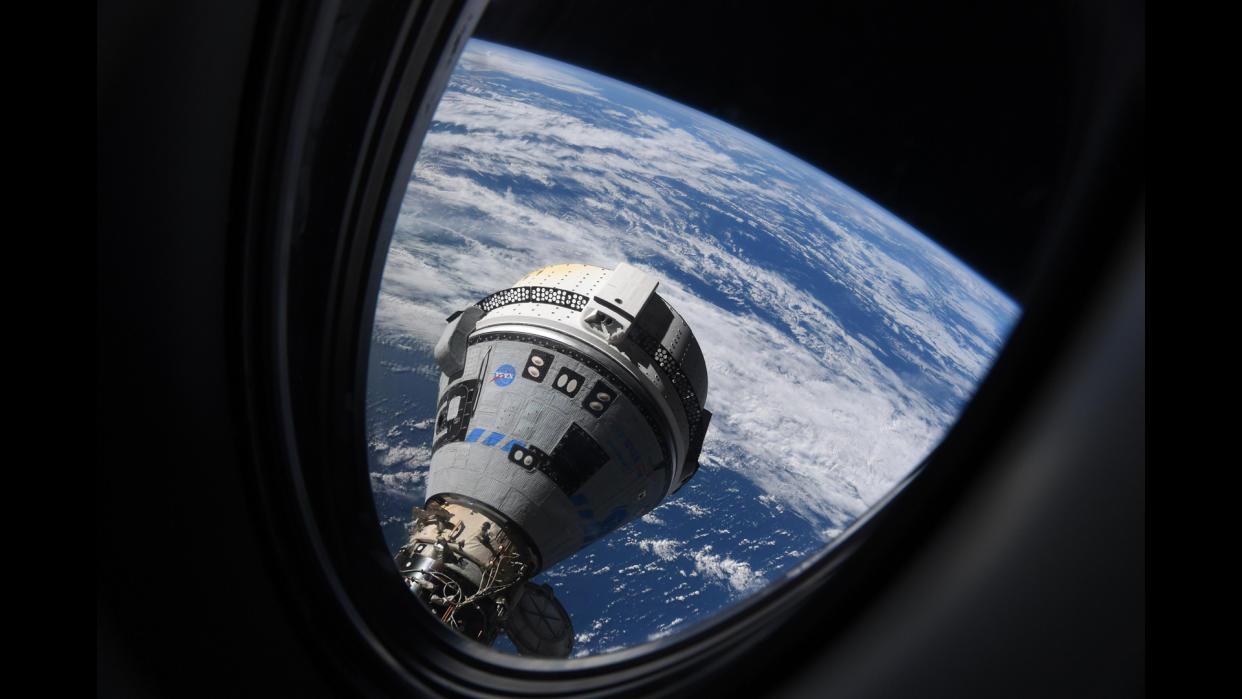Boeing's Starliner spacecraft still doesn't have a landing date, NASA says

NASA says Boeing Starliner will extend its first astronaut mission well into the summer after launching June 5 for what was supposed to be a 10-day flight.
Starliner experienced both helium leaks and thruster issues during a June 6 docking with the International Space Station (ISS). The spacecraft is stable and rated to leave the ISS in case of emergency, Boeing and NASA leadership stress. But after testing the thrusters in space, NASA and Boeing said they want to take more time to understand the root cause.
A test campaign will start as soon as July 2 at the White Sands Test Facility in New Mexico to replicate how the thrusters were used during the flight, NASA commercial crew program manager Steve Stich said during a livestreamed update today (June 28) with reporters. The testing will take approximately two weeks, but that depends on what is found — and more analysis will be required afterwards. As such, NASA and Boeing do not yet have a landing date for Starliner.
"We're not going to target a specific date until we get that testing completed, and we look at the fault tree, and then we understand the path for it," Stich said.
Starliner's 10-day Crew Flight Test mission with NASA astronauts Butch Wilmore and Suni Williams, both former U.S. Navy test pilots, is a developmental mission that had flexibility built into it in case of the unexpected in space.
The unexpected happened on June 6 during docking, as an ongoing tiny helium leak and five misbehaving thrusters affected Starliner's final approach to the ISS. NASA waved off the first attempt at docking to make sure Starliner was ready to go, but authorized the second attempt, which brought the spacecraft to dock at the orbiting complex.
Extra testing and review of the helium supply and five thrusters (out of 28 in the reaction control system) revealed the leak had stabilized and that most of the thrusters were recovering. NASA and Boeing have decided, however, not to use at least one of those thrusters during landing due to performance concerns.
Prior to today's teleconference, the last major update from Starliner officials came on June 21, which suggested the landing would be sometime after July 2. Analysis continues today, the teleconference participants noted, and even more testing may be required on the spacecraft depending on what is found at White Sands.
"After it's all complete, we'll meet and we'll make sure we did everything we needed to do to understand the system, then we'll come home safely," said Mark Nappi, vice president and program manager of Boeing's commercial crew program. Nappi emphasized the timing of what happens next cannot be said yet. "These tests are unpredictable [as to] how long they take and and how successful they'll be."
Related: Will Boeing Starliner issues delay its 1st long-duration astronaut flight? It’s too soon to tell.

RELATED STORIES:
— Boeing's 1st Starliner to carry astronauts arrives at ISS despite thruster malfunction
— ISS astronauts conduct 'spacewalk review' after spacesuit coolant leak
— NASA cancels ISS spacewalk due to spacesuit coolant leak (video)
While analysis continues on the ground, Wilmore and Williams pivoted their time into other ISS duties, such as maintenance. "They know this is a test flight, and they knew that we would learn, and this is all good. It's all not unexpected," Nappi said of the crew's comments in recent communications with Boeing from orbit.
Starliner is a new spacecraft type from Boeing, as opposed to the other commercial crew supplier that ferries astronauts to the ISS: SpaceX's Crew Dragon, which is based on the Cargo Dragon design. Starliner took two uncrewed missions to get ready for CFT, after the first effort failed to reach the ISS in 2019 due to computer glitches.
Dragon, meanwhile, had a single uncrewed mission in 2019 and a single astronaut flight test in 2020 before starting operational ISS crewed missions every six months.
Following the COVID-19 pandemic and dozens of fixes, Starliner's second uncrewed test flight safely reached the ISS in 2022 after also experiencing thruster issues during docking. One reason CFT has been docked for extra time is to evaluate the service module in which most of the fuel is located, as that will be discarded during landing. That testing may determine more about why Starliner's thruster system had issues during the 2022 and 2024 dockings.

